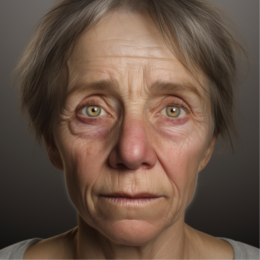How to Prevent Arthritis? (Diet, Exercise & More)

Arthritis is a prevalent and often debilitating condition that affects millions of people worldwide. According to the latest statistics from the World Health Organization (WHO), an estimated 350 million people suffer from arthritis globally, which is expected to rise as the population ages. However, the good news is that there are steps you can take to prevent arthritis or reduce its impact on your life. In this article, we will explore the importance of diet, exercise, and other lifestyle factors in preventing arthritis and maintaining joint health.
What Is Arthritis?
Arthritis is a common but often misunderstood disease. It is not a single ailment but rather a term for joint disease or joint pain encompassing over 100 different types. Although anyone can get arthritis, it is more prevalent in older adults, with women being more susceptible than men. It leads to pain, aching, stiffness, and swelling in or around joints. Rheumatoid arthritis, osteoarthritis, and gout are among the most common types.
Statistics:
- As of 2022, over 23% of adults in the United States, or about 54.4 million people, have some form of arthritis [1].
- Arthritis is one of the leading causes of disability worldwide. In 2017, it was estimated that 291.6 million people had osteoarthritis, which was 65% more than in 1990. This increase is partly due to an aging population and rising obesity rates, which are known risk factors for osteoarthritis [2].
Signs and Symptoms of Arthritis
Arthritis can present in various ways depending on the type of arthritis and the individual’s specific condition. However, some common signs and symptoms associated with arthritis include:
- Joint Pain: This is often the first symptom of arthritis. Pain can occur during movement or while at rest. The pain is typically associated with inflammation around the joint.
- Stiffness: Stiffness in the joints is another common symptom. You may find your joints stiff, particularly after waking up in the morning or after periods of inactivity.
- Swelling: Swelling of the joints is a common symptom of some types of arthritis, such as rheumatoid arthritis and osteoarthritis. The swelling is due to inflammation and can cause the joints to look larger or more distorted than usual.
- Redness and Warmth: The skin around the affected joint may become red and feel warm to the touch, indicating inflammation or infection.
- Limited Range of Motion: As arthritis progresses, you may find it difficult to move the joint through its full range of motion. This limitation can affect your ability to perform daily activities such as walking, climbing stairs, or opening jars.
- Joint Deformity: In severe or advanced cases of certain types of arthritis, like rheumatoid arthritis, the joints may become visibly deformed.
- Other Symptoms: Some forms of arthritis, such as rheumatoid arthritis and lupus, can also affect other parts of the body, causing symptoms like fatigue, weight loss, eye inflammation, or even damage to organs such as the lungs, heart, or kidneys.
It’s important to remember that the severity of these symptoms can vary and may come and go. Periods of relatively mild symptoms may be followed by periods of more severe symptoms, known as flare-ups.
If you notice persistent symptoms of arthritis, it’s important to seek medical attention. Early diagnosis and appropriate treatment can help control the symptoms and potentially slow the progression of the disease.

How to Prevent Arthritis?
While genetic factors can predispose individuals to certain types of arthritis, lifestyle changes can help reduce the risk of developing the disease or slow its progression.
Maintaining a Healthy Weight
Excess weight puts additional pressure on your joints, especially your knees, hips, and feet. Maintaining a healthy weight can ease the strain on these joints and limit the wear and tear that can lead to arthritis. A study by the National Institute of Arthritis and Musculoskeletal and Skin Diseases (NIAMS) showed that for every pound of weight lost, there was a four-pound reduction in knee joint stress [3].
Regular Exercise
Staying active can help to keep your joints flexible. Weight-bearing exercises such as running and walking can be damaging, so consider alternatives such as swimming or cycling, which are gentler on your joints. In addition, strengthening exercises can help to build the muscles around your joints, providing them with more support.
Healthy Diet
Certain foods have been associated with arthritis inflammation. Eating a diet rich in fruits, vegetables, lean proteins, and omega-3 fatty acids, such as those found in fish, can help fight inflammation and strengthen your bones. The Mediterranean diet, high in fruits, vegetables, fish, nuts, and beans, is highly recommended [4].
Avoid Injuries
Joint injuries can increase the chances of developing arthritis. While accidents happen, consistent use of appropriate safety equipment and precautionary measures during physical activities can help avoid them.
Limit Alcohol and Tobacco
Excessive consumption of alcohol and tobacco can lead to a host of health issues, including an increased risk of rheumatoid arthritis [5].
Regular Medical Check-Ups
Early detection can slow down the progression of the disease and prevent damage to joints. If arthritis runs in your family, regular check-ups can provide early diagnosis and treatment.
Conclusion
While there’s no guaranteed way to completely prevent arthritis, adopting these lifestyle changes can significantly lower your risk and slow its progression if you already have it. Arthritis is a leading cause of disability worldwide [5], so it’s important to take proactive measures to maintain our joint health and overall well-being.
Remember, you don’t have to make all these changes at once. Start small and gradually incorporate more of these practices into your lifestyle. Your body, and specifically your joints, will thank you for it in the long run!
References:
- Centers for Disease Control and Prevention (CDC) (2022). “Arthritis in America.” Retrieved from: https://www.cdc.gov/arthritis/data_statistics/arthritis-related-stats.htm.
- Global Burden of Disease Study 2017 (GBD 2017). (2018). “Global, regional, and national incidence, prevalence, and years lived with disability for 354 diseases and injuries for 195 countries and territories, 1990–2017: a systematic analysis for the Global Burden of Disease Study 2017.” Lancet 392: 1789–858.
- National Institute of Arthritis and Musculoskeletal and Skin Diseases (NIAMS) (2021). “Handout on Health: Osteoarthritis.” Retrieved from: https://www.niams.nih.gov/health-topics/osteoarthritis.
- Skoczyńska, M., & Świerkot, J. (2018). The Mediterranean diet and its role in the prevention and treatment of rheumatoid arthritis. Reumatologia, 56(5), 259–267. https://doi.org/10.5114/reum.2018.80050.
- Scott, D., & Wolfe, F. (2011). The effect of smoking and alcohol consumption on disease severity in rheumatoid arthritis: A review. Rheumatology International, 31(10), 1311–1318. https://doi.org/10.1007/s00296-011-2004-z.
- Global Burden of Disease Study 2017 (GBD 2017). (2018). Global, regional, and national incidence, prevalence, and years lived with disability for 354 diseases and injuries for 195 countries and territories, 1990–2017: a systematic analysis for the Global Burden of Disease Study 2017. Lancet 392: 1789–858.





